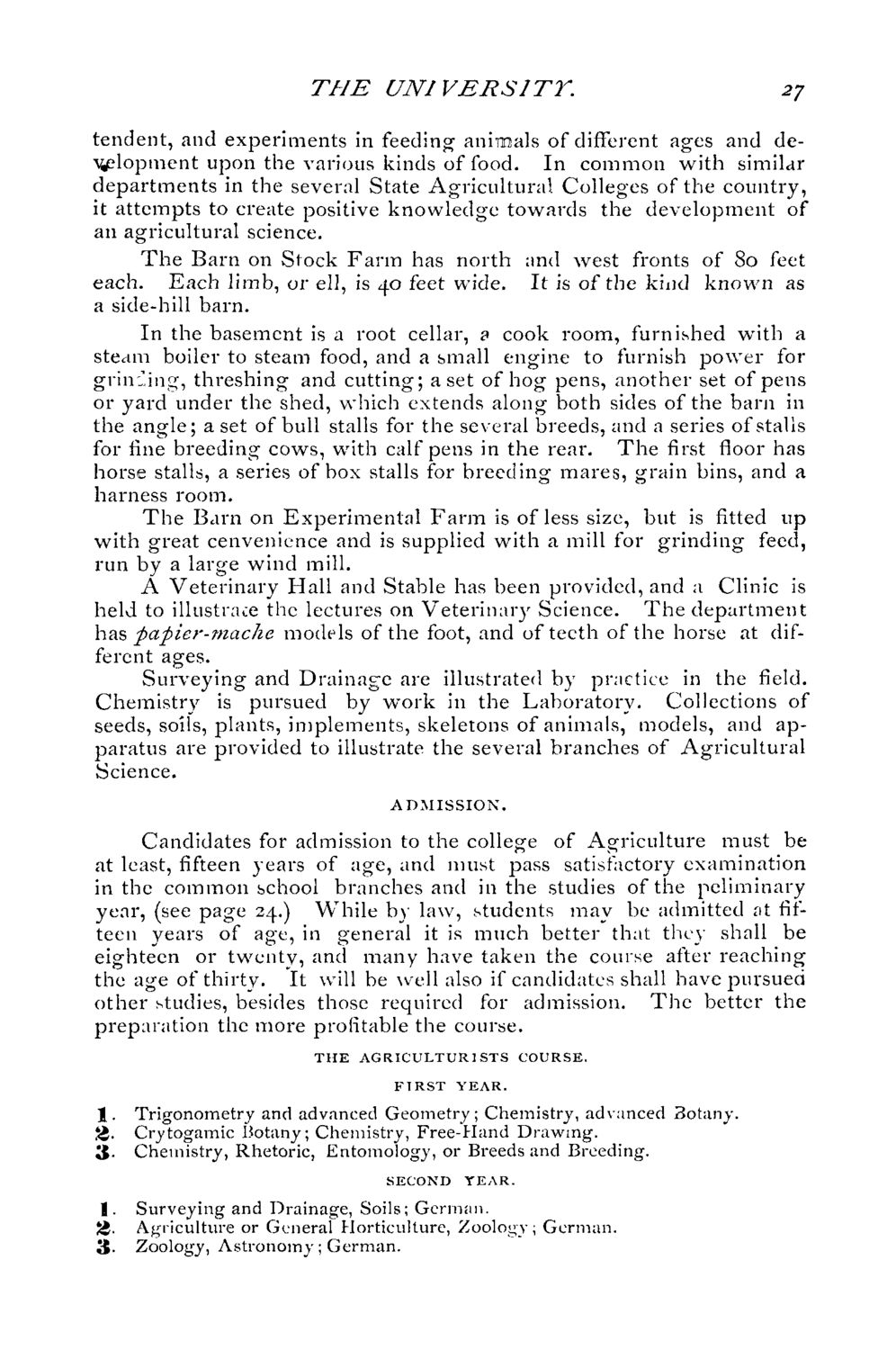| |
| |
Caption: Course Catalog - 1875-1876
This is a reduced-resolution page image for fast online browsing.

EXTRACTED TEXT FROM PAGE:
THE UNIVERSITY. 27 tendent, and experiments in feeding1 animals of different ages and de•\jslopment upon the various kinds of food. In common with similar departments in the several State Agricultural Colleges of the country, it attempts to create positive knowledge towards the development of an agricultural science. The Barn on Stock Farm has north and west fronts of 80 feet each. Each limb, or ell, is 40 feet wide. It is of the kind known as a side-hill barn. In the basement is a root cellar, a cook room, furnished with a steam boiler to steam food, and a small engine to furnish power for grinding, threshing and cutting; a set of hog pens, another set of pens or yard under the shed, which extends along both sides of the barn in the angle; a set of bull stalls for the several breeds, and a series of stalls for fine breeding cows, with calf pens in the rear. Thefirstfloorhas horse stalls, a series of box stalls for breeding mares, grain bins, and a harness room. The Barn on Experimental Farm is of less size, but is fitted up with great cenvenience and is supplied with a mill for grinding feed, run by a large wind mill. A Veterinary Hall and Stable has been provided, and a Clinic is held to illustrate the lectures on Veterinary Science. The department has papier-mache models of the foot, and of teeth of the horse at different ages. Surveying and Drainage are illustrated by practice in the field. Chemistry is pursued by work in the Laboratory. Collections of seeds, soils, plants, implements, skeletons of animals, models, and apparatus are provided to illustrate the several branches of Agricultural Science. ADMISSION. Candidates for admission to the college of Agriculture must be at least, fifteen years of age, and must pass satisfactory examination in the common school branches and in the studies of the pcliminary year, (see page 24.) While by law, students mav be admitted at fifteen years of age, in general it is much better that they shall be eighteen or twenty, and many have taken the course after reaching the age of thirty. It will be well also if candidates shall have pursued other studies, besides those required for admission. The better the preparation the more profitable the course. THE AGRICULTURISTS COURSE. FTRST YEAR. 1. Trigonometry and advanced Geometry; Chemistry, advanced Botany. 5J. Crytogamic Botany; Chemistry, Free-Hand Drawing. 3- Chemistry, Rhetoric, Entomology, or Breeds and Breeding. SECOND YEAR. 1. Surveying and Drainage, Soils; German. SJ. Agriculture or General Horticulture, Zoology ; German. it- Zoology, Astronomy; German.
| |